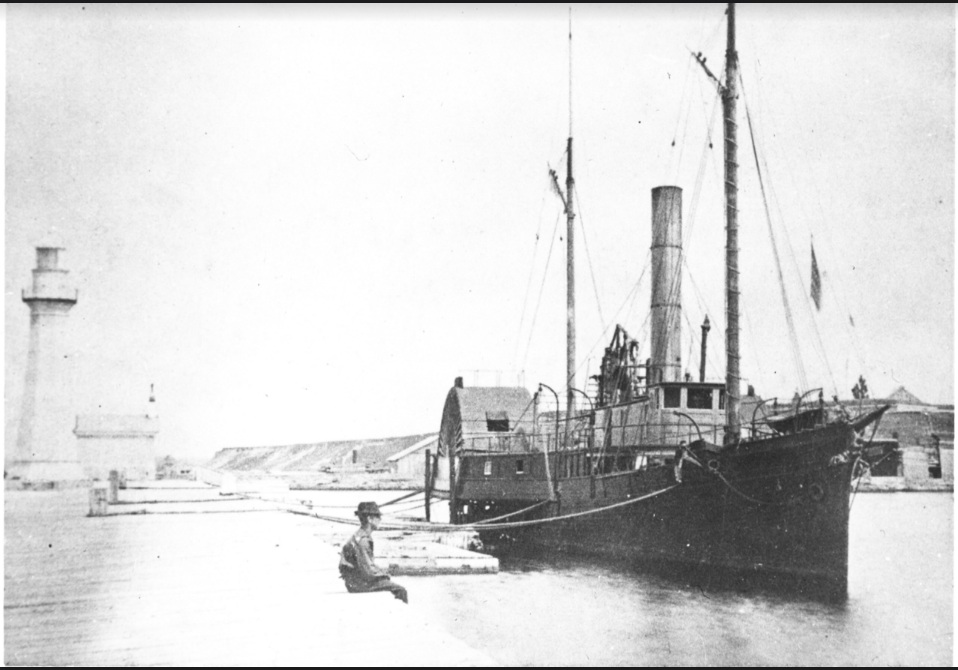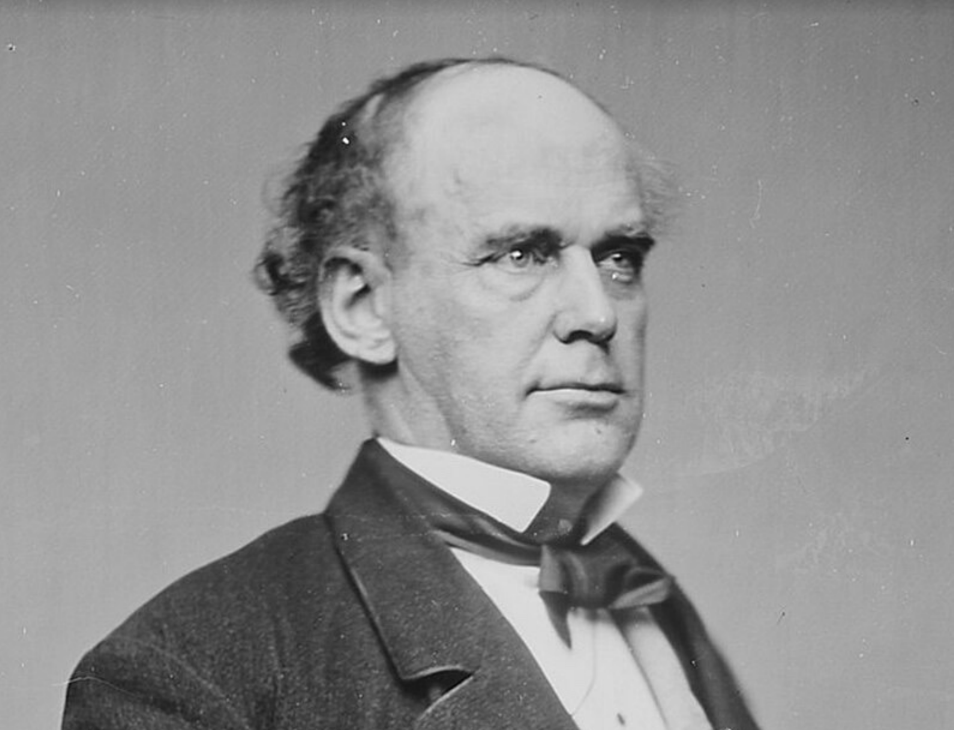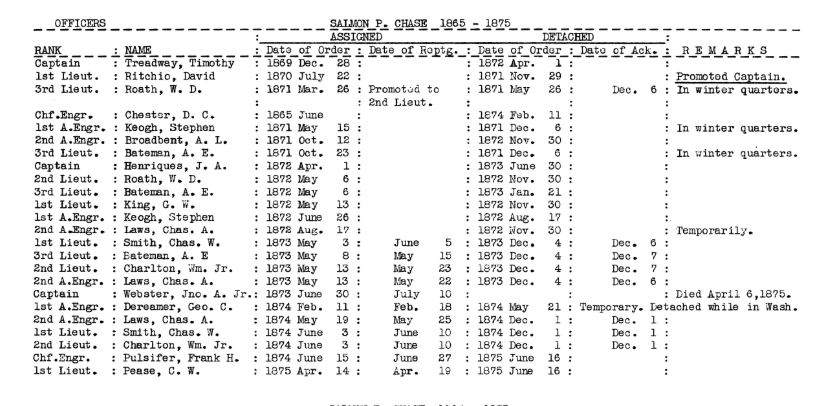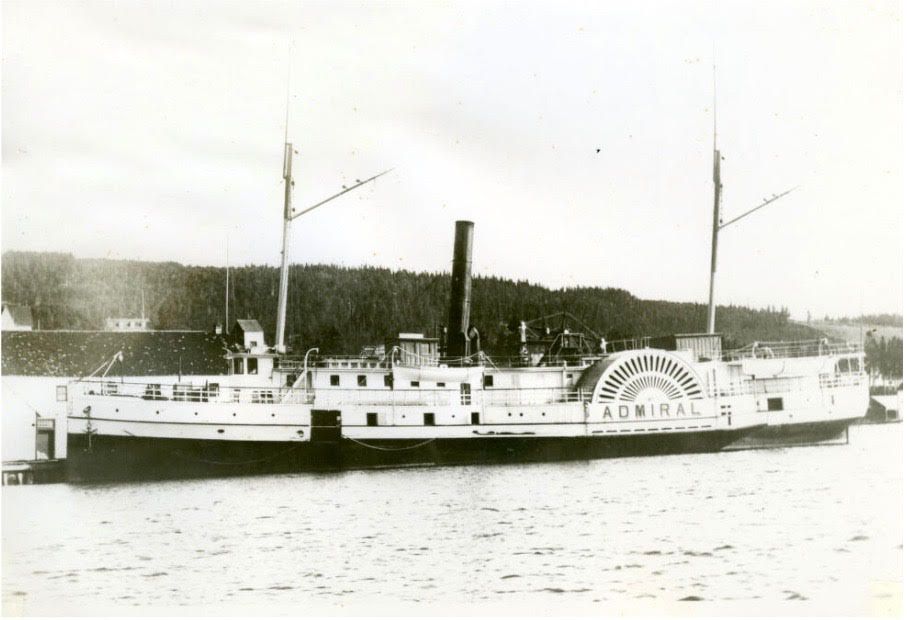Steam vessels called revenue cutters were regularly assigned to the Great Lakes during the 19th century, primarily to deter smuggling between the United States and Canada.
One of these cutters was the Salmon P. Chase, known as simply the Chase. She was built at the Brooklyn shipyard of James Murphy & Co., was commissioned on October 9, 1865, and was one of five wooden-hulled, side paddle-wheel steamers powered by a walking-beam steam engine.
The hull was constructed with iron diagonal bracing for added strength. The crew consisted of the captain, executive officer, pilot, chief engineer, and 1st engineer. She patrolled Lake Ontario and the St. Lawrence River for about a decade, being laid up in Ogdensburg during the winter.
From the New York Herald, September 23, 1865:
“The steam revenue cutter "Salmon P. Chase", the first completed of the six vessels of her class authorized to be built by Congress to ply the Northern lakes to prevent smuggling from Canada, went on her trial trip down our harbor yesterday and out to sea, and acquitted herself in a most satisfactory manner.

All six of the vessels are to be side wheel steamers of the same dimensions. Each will carry one 30-pounder Parrott gun and two twenty-four pounder Dahlgren howitzers. The others are also nearly completed, and it is expected that they will soon take their places on the lakes.

The cutter was named in honor of Chase who was Chief Justice of the United States from 1864 until is death in 1873. He was a U.S. Senator who represented Ohio, and was the 23rd governor of Ohio from 1856 to 1860. He also was Secretary of the Treasury from 1861 to 1864 during the administration of President Abraham Lincoln.

And one more reference that will make you smile:
Oswego Advertiser & Times, Wednesday, August 15, 1866
"The “Chase” – Oh Her Nerve! For some time, the Canadian steamboat men have been chuckling over the success of one or two of their steamers in passing the Revenue Cutter “Chase,” while cruising the River. The “Chase” is a coal burning vessel and cannot, therefore, get up steam so rapidly as the wood burning vessels, and hence their success in taking her without notice.
On Thursday, the “Spartan,” of the Canadian line, left her dock at Prescott just thirteen minutes before the “Chase” started for Lewiston with the Second Assistant Treasurer. She reached Brockville a few minutes in advance of the cutter, and had swung into the River again as the latter came up. Her bell was rung to let her go fast and off she started on a race. The “Chase” having had time to make steam, soon passed her contestant, and was rapidly leaving her astern when her blower gave out.
During the interval which was required to repair it, the “Spartan” nearly gained her lost ground, but as the “Chase” began to make steam again she was left a long ways behind. At the time the “Spartan” was last seen, when turning into the British channel above Crossover Light House, she was a couple of miles astern. We presume we shall hear no bragging by the Canadians over this race."
Crossover Light in the St. Lawrence River is on National Register of Historic Places

The vessel was sold to John F. Rosseel, Mayor of Ogdensburg for $11,572 on June 15, 1875 and converted into a yacht called the Admiral. It was then commanded by veteran Captain J. B. Estes with John Howard as engineer. (North American Navigation Co., Canadian Registration No. 88306). For a time she was used as a passenger steamer between Montreal and Quebec City. She was destroyed by fire at Montreal on October 4, 1904.

Sources:
• Canney, Donald , U.S. Coast Guard and Revenue Cutters, 1790-1935. Annapolis, MD: Naval Institute Press, 1995.
• The Revenue Cutter Chase, Oswego Advertiser & Times, November 18, 1865.
• U.S. Coast Guard. Record of Movements: Vessels of the United States Coast Guard: 1790 - December 31, 1933. Washington, DC: U.S. Government Printing Office, 1934.
By Richard F. Palmer
Richard Palmer is a retired newspaper editor and reporter, and he was well known for his weekly historical columns for the “Oswego Palladium-Times,” called "On the Waterfront." His first article for TI Life was written in January 2015, and since then, he has dozens of articles and more. He is a voracious researcher, and TI Life readers certainly benefit from his interests and we hope he will continue to find this important history.
Posted in: Volume 19, Issue 6, June 2024, People, Places, History, Current
Please click here if you are unable to post your comment.
